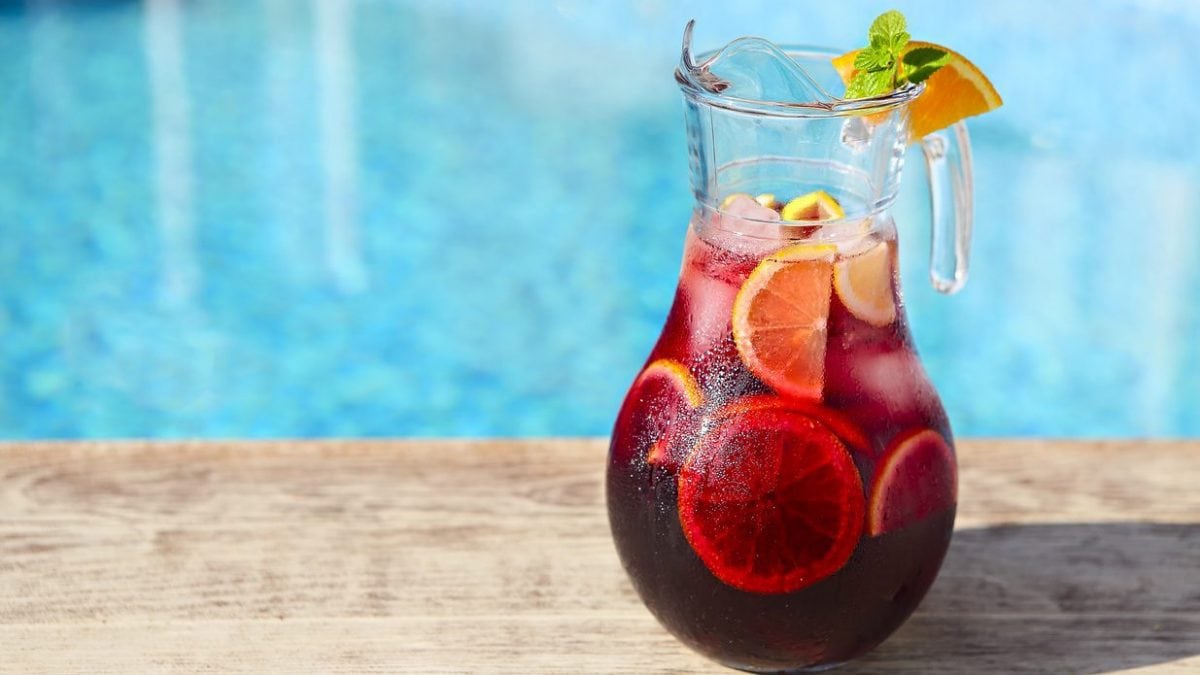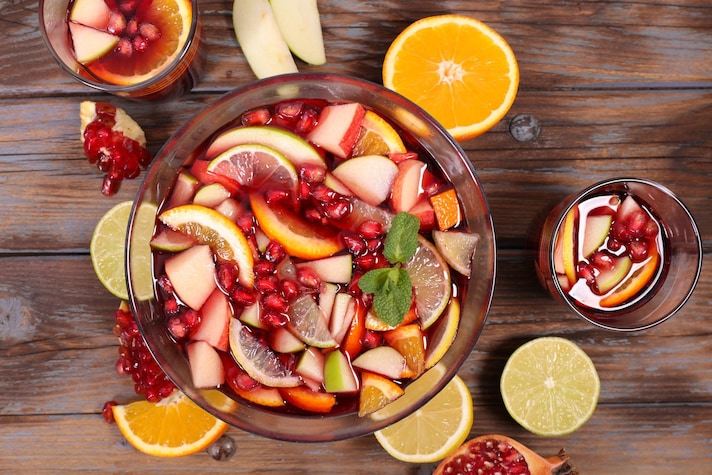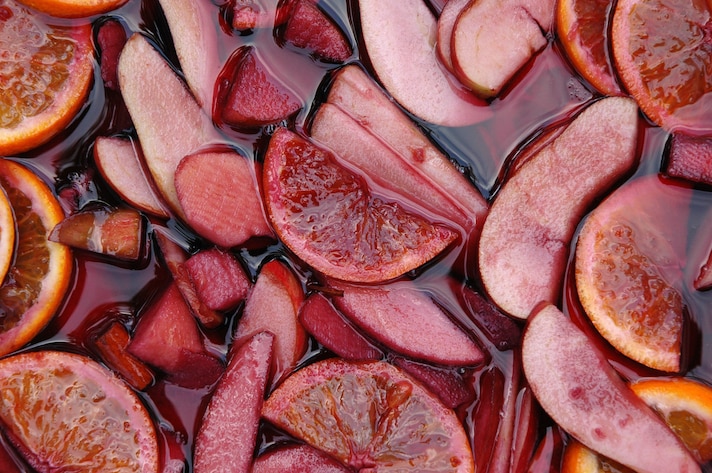
With the prevailing heat, it's practically impossible to avoid sangria: there are dozens of variations of this typically Iberian wine-based drink. We could call it "the most famous punch in the world," because it belongs to that category of drinks with at least five ingredients and a low alcohol content. The success of sangria lies precisely in the ability to vary the flavor by changing even just one ingredient, in the simplicity of its preparation, and in its unique color: the term "sangria" evokes blood, thanks to the bright red color of the product. The origins of this drink are ancient and attributed to Portuguese peasants in pre-Roman times. Let's look at the history of sangria together, because it is truly multifaceted and fascinating.
The Thousand-Years Long History of Sangria
Sangria is perfect for picnics and large lunches because you prepare it and it sits there, ready to be poured into glasses for those who want something sweet to drink. Many people associate this drink with aperitif, but that's a bit of a stretch: sangria is sugary by definition, while the history of the aperitif is all about its bitter taste.

The history of sangria is closely tied to its production areas and the wine it's made from. While we associate it with Spain (rightly so, as it's the country's signature drink), it's important to note that there are many different recipes depending on the region. The most common version is made with red wine, hence the name "sangria," but equally historic is the sangria of Catalonia, made with sparkling wines and other white wines. Argentina, Chile, and Venezuela also have local versions, which is why it's so difficult, if not impossible, to come up with a single, historical recipe.
The origins of this drink can be traced back to the times of the Greeks and Romans: they were the first to mix wine, sugar, spices, and other locally available ingredients. It was the first aperitif cocktail in history, the famous vinum hippocraticum, a sweet white wine with dittany, wormwood, and rue, which was used to stimulate digestion in patients. The blended wine conquered the entire Empire and found fertile ground in the Iberian Peninsula until 711, when the winemaking tradition succumbed to the Islamic invasions: sangria disappeared for 700 years.
1492 was a pivotal year, marking history with several epochal events: the fall of Granada, which drove out the Moors; the expulsion of the Jews, which put an end to the Inquisition at the court of Castile, which had begun in 1478; and, of course, the discovery of America. With the "new" Iberian Peninsula, made up of nation-states, wine production returned, and consequently, sangria returned in style to the tables of the Portuguese and Spanish. Experimentation with different vineyards began in 1500: traditionally, sangria, even today, uses Spanish Tempranillo (and other Rioja wines), to which local citrus fruits are added for maceration.

For a couple of centuries, sangria remained within the confines of the Empire, but by the 1700s it had spread to England and France, and especially in the latter, it was adored by locals. The French winemaking tradition combined with Hispanic imagination gave rise to a series of extraordinary blends, with French wines used as the base alcohol. They began producing white sangria, peach sangria (very similar to the Neapolitan peach wine), and even sparkling sangria with champagne (although it didn't exist under that name at the time).
Spanish emigration to the United States, which began with the Bourbons and intensified with the Franco dictatorship, brought this drink to America, first in Spanish restaurants and then in the more bourgeois establishments on the East Coast. New Yorkers in particular loved this simple yet delicious drink, and in the 1960s, a veritable sangria craze was born thanks to a brilliant idea from the Spanish government: at the 1964 New York World's Fair, the Expo held in the Big Apple, the Spanish pavilion pompously presented this drink as a national symbol. From then on, all of America could not do without it, making it a veritable trend for decades to come.
Today, things have changed a bit, and developments in the world of mixology have brought flavors from all over the world to almost every corner of the globe. Sangria remains a pleasant pastime, and many companies have begun producing pre-mixed bottles. Be careful with these, however: according to European regulations, all sangrias must be produced in Spain or Portugal and must have less than 12% alcohol by volume.
All The Variations of Sangria
Sangria has countless variations, thanks to its ease of preparation and the inventiveness of bartenders who have experimented with this product. Imagination knows no bounds, and you too can create your own version of sangria at home, perhaps with a few less cloves and a few more spices. However, there are some recognized variations that have become famous over the years:
- The most famous is undoubtedly white sangria, also known as Catalan sangria. Originating in Catalonia, a region east of the Iberian Peninsula, it is the quintessential summer cocktail, an incredible mix of colors and sweetness that makes your afternoons "caliente." To prepare white sangria, you need a bottle of Prosecco white wine (or Sauvignon Blanc or Muller Thurgau), vodka, and also oranges, peaches, sugar, and cinnamon. The procedure is the same as the original Spanish recipe: always remember to macerate everything for at least 2 hours before serving;
- Cava sangria is a variation of the Catalan version and takes its name from Cava, a city in Catalonia. This is also white, but Champagne is used. The process is the same as the classic version;
- winter sangria, made with seasonal fruit and perhaps heated like mulled wine. It seems that the Romans themselves often and willingly opted for this version;
- Non-alcoholic sangria, a refreshing alternative to the traditional recipe. Simply replace the wine with your favorite fruit juice or tea. Apple juice is the most recommended, while tea flavored with cinnamon and cloves is a good option.
- Mexican sangria, whose recipe is identical in every way, but instead of Spanish brandy, use tequila or mezcal, the two iconic Mexican spirits. Another important tip: lime juice mixed with orange juice;
- Rosé sangria, as the name suggests, is made with rosé wine. It has a very delicate flavor, so we suggest cognac instead of brandy.
;Resize,width=767;)